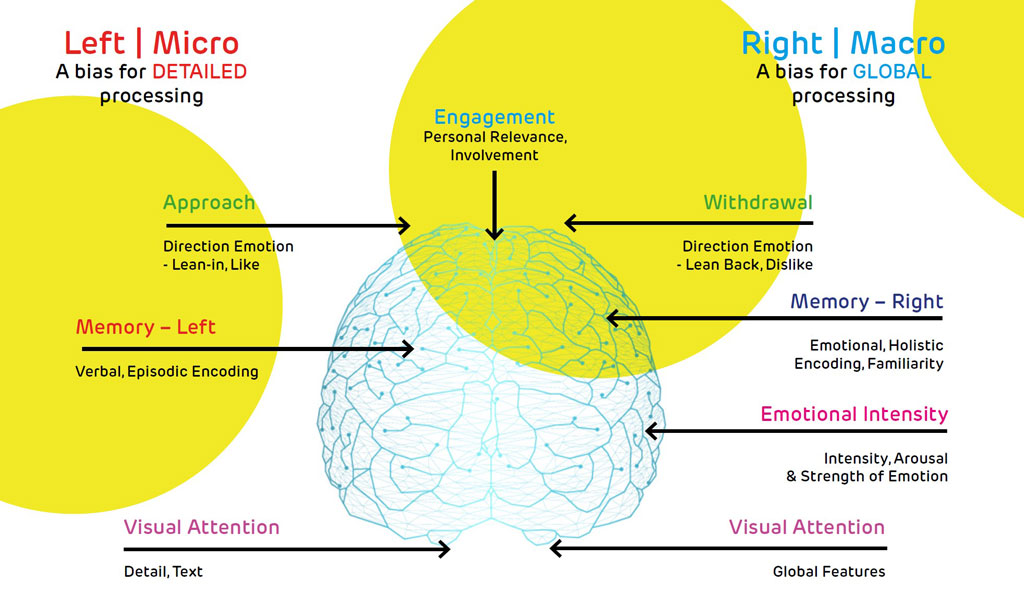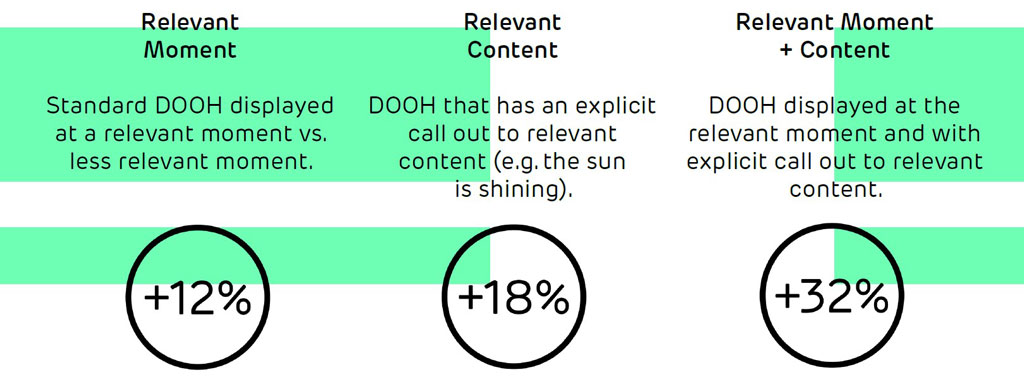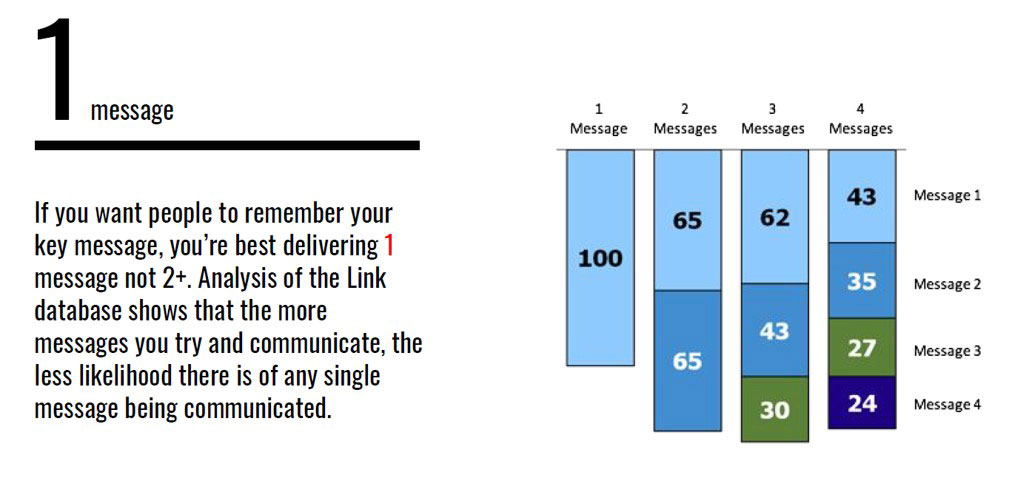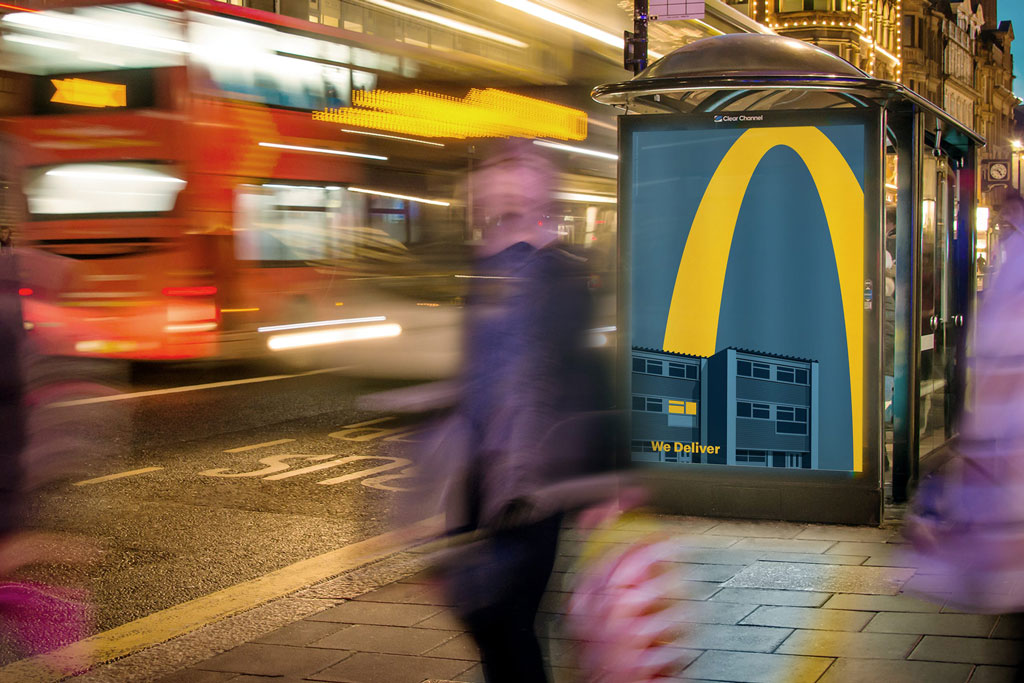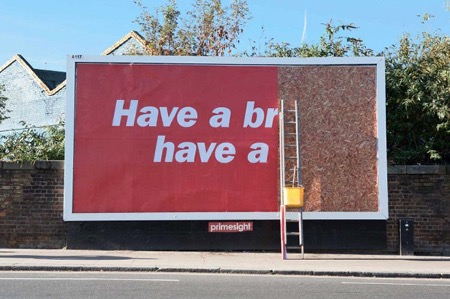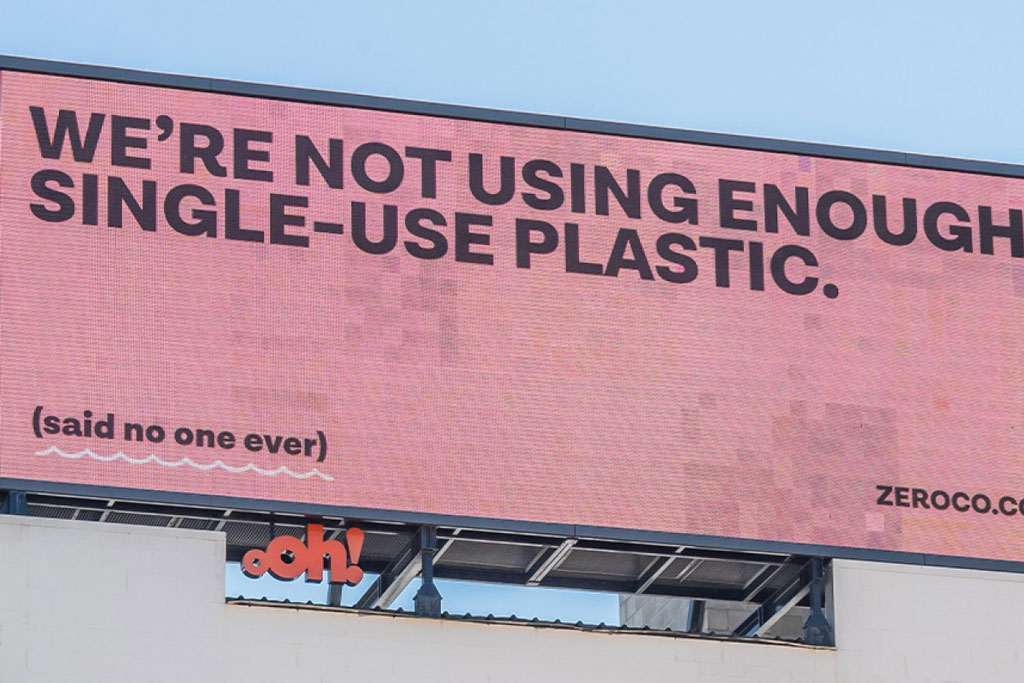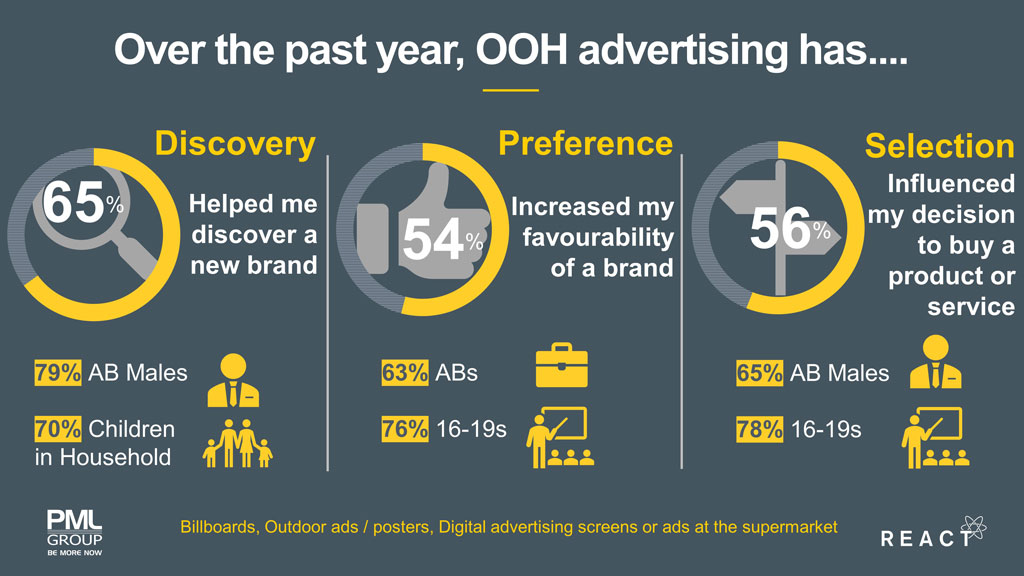James Byrne, marketing manager, PML Group with this week’s Out \ Look on Out of Home.
Out \ Look on the Seven Principles of Marketing Communications
Tom Roach, the renowned brand and communications strategist and VP Brand Planning at Jellyfish Global recently wrote in Marketing Week on the seven principles of effective marketing communication. His starting point was that the focus in our industry is often on the new and evolving technologies that facilitate commercial communication rather than the underlying values that underpin effective exchange of ideas.
Here I take those principles and look that them from an OOH perspective.
The most important tech of all
Tom opens with the brain. He argues that developments in communication technology are really just software while the human brain is the hardware they all have to run on. It governs our primitive physical and emotional drives, our motivations, memories and decision making.
Psychologist and economist Daniel Kahneman outlined the two systems of mental processes that govern all human behaviour and decision making. System 1 is quick, intuitive, automatic, lazy and effortless, and governs the vast majority of our decisions and behaviour. System 2 is slower, more conscious, more deliberative and more effortful, and is responsible for only a tiny minority of our behaviour.
From an OOH perspective, last year saw the publications of a landmark three-stage research, “The Moments of Truth”, which revealed the impact contextually relevant messaging has in delivering Digital Out of Home campaign effectiveness. The pioneering study by Clear Channel, JCDecaux UK and Posterscope proved moments and content relevance in Digital Out of Home campaigns increase consumer brain response, ad recall, brand / creative rating and sales response.
The brain response element of the research, conducted by leading Neuroscience research company, Neuro-Insight, aimed to expand understanding of advertising at relevant moments, and why content featuring individual dynamic data triggers, such as location or live updates, is more effective at driving increased levels of brain response. Using the established Neuroscience technique of Steady State Topography (SST), the research measured the brain responses of more than 160 people who were exposed to content across numerous different brand categories on a full-size portrait DOOH screen and revealed the following:
Displaying a brand or product ad at the right moment (either by time/day of week)
- An average +12% increase in brain response when displaying a ‘brand’ or ‘product’ communication at the most relevant moment
Advertising at relevant moments was measured and reported in two different ways (different moment/same creative and different product/same moment) and when combined demonstrated a +12% increase in average brain response. For participants who viewed identical creative at a more relevant moment, average brain response increased by +14%.
For example, a category like Alcohol, viewed on a Monday to Wednesday weekday morning (less relevant moment) vs. a Friday/Saturday afternoon (more relevant moment). Or a business to consumer brand being viewed on a weekday morning (more relevant moment) vs. a Friday/Saturday afternoon (less relevant moment). Participants viewing very similar creative, but with the product adapted to be more relevant to the moment, increased average brain response by +10%.
For example, a supermarket/food brand featuring a “ready meal” product image viewed on a Friday/Saturday afternoon (less relevant product) vs. a “roast dinner” product image (more relevant product). The same process was repeated on a Monday to Wednesday morning with the relevant products now switched. i.e. “ready meal” more relevant on a weekday.
The largest increase was seen for the brain metric of Approach which is a measure of positive emotion. For this brain metric, when identical content was viewed at a more relevant moment it elicited a +248% stronger response.
Displaying unique and relevant content based on either the time, location, weather or a live update in time.
- An average +18% increase in brain response when displaying content that was relevant using either the location, the weather, the time or a live update as the stimulus trigger.
The research proved that across each of the four dynamic triggers (location, weather, time, live updates), average brain response was higher for test content with a relevant call out vs identical control content that did not feature an explicit call out.
Different triggers elicit responses in different areas of the brain
A key learning in our understanding of relevant content was that while all dynamic content elicited a stronger brain response (average +18%) than its non-dynamic counterpart, the area of the brain where these differences were observed varied significantly depending on the dynamic content in question.
Another significant learning was the benefits of using multiple dynamic content at different exposures which helped to maintain higher levels of brain response and reduced wear-out by 1/3.
Exposure to multiple, differing pieces of dynamic content resulted in lower levels of ad wear-out when compared to viewing the same non-dynamic content multiple times. The neuroscience explanation is that the variations in the content act as a way of “re-engaging the brain” with new information.
The combination of the above – or the ‘nirvana state’ equals the correct application of content and moment.
- An average +32% increase in brain response when displaying most relevant content at the most relevant moment.
The most significant increase in brain response was identified when creative was seen at both the relevant moment AND with explicit reference to dynamic content.
This combined effect is logical, as individually, relevant moments and relevant content both stimulate the brain at a higher level – so one would naturally expect the combination of the two to illicit stronger effects.
The brain metric of Approach, which is a measure of positive emotion, saw the largest effect. When relevant content (e.g. featuring a location call out) was viewed at a more relevant moment, it elicited a 6.8 x stronger level of Approach – showing that this added level of relevance increases positive emotional response.
Introduced by PML Group to the Irish media market, Liveposter is the digital platform that enables brands to maximise the value of digital Out of Home advertising by using dynamic creative to engage consumers with the right message at the right time. Liveposter automates the deployment of a campaign across multiple media networks from a single platform, reducing costs for brands by removing the need to manage campaigns on an individual media owner basis. It is a real time content management system i.e. the process of configuring an ad from data instructions.
Many of the learnings derived from The Moments of Truth tie in with Roach’s seven pillars.
1 Reach
In adopting the premise that a brand’s growth is driven primarily by acquiring new and light buyers rather than by driving loyalty from existing heavy customers, Roach proposes that the focus should be on reaching as many people as possible. This fits with Byron Sharp’s view that brands grow by focusing on new customer acquisition, driven by increasing mental and physical availability, resulting in behaviourally loyal buyers.
Out of Home is always on, no clutter, no filter, no off switch. Pure advertising. Roadside locations in particular generates message contacts 24/7 across the course of a campaign in the perfect environment with a national platform with an urban focus. It effectively wags the long tail.
2 Attention
As Roach says, no communication ever exists in beautiful isolation. Cutting through the clutter in a challenge for every marketer. However compelling OOH displays can stand out, draw the eye and fill ‘dead time’ even among today’s connected consumer.
In today’s smartphone infiltrated world, the way people consume media is constantly changing, and as mobile and digital media become more saturated, OOH can intercept consumers. Using smart data-led planning and buying, OOH can cut-through the noise, earning consumers attention to seek out relevant brands through mobile.
OOH has always been a powerful creative experience. It can be bold, provocative, surprising, or delightful, driving consumers online to share experiences or show support, to obtain information, products, or services right there and then, in that very moment.
- Creativity
Creative has repeatedly been found to be among, if not the, strongest driver of sales and profitability. OOH is a pure play medium without editorial or prior purchase barriers. To paraphrase Robert Fleege, a poster ad is finished only when you no longer can find a single element to remove. He also opined that the biggest mistake in designing for outdoor is to mistake outdoor for print advertising. Leo Burnett was also an advocate of the less is more narrative; “Make it simple. Make it memorable. Make it inviting to look at. Make it fun to read.”
A study from Kantar Millard Brown found that the more messages you try and communicate the less likely you are to land any individual message.
Supporting this finding, Research published in the Journal of Advertising Research shows ads with two message elements are 21% more likely to be noticed than ads with five message elements.
- Distinctiveness
In Byron Sharp’s seminal ‘How Brands Grow’ he discusses how for a brand element to become a distinctive brand asset it needs to:
- Be unique and distinctive – the element must make your target audience think of your brand, and not your competitors.
- Stand out – attract attention of your target audience and stand out from the crowd.
- Be well-known – enough of your target audience must associate the brand element with your business to make it a valuable asset.
Roach gives the best in class example of McDonald’s which has so successfully built on its branding strategy to be in a position where it can make a play on this strength in communications.
This is another courageous example – where negative space creates a positive reaction. Colours, typeface and half a tagline is all that’s required when the brand’s prior brand communications were consistently distinctive.
- Consistency
Being consistently distinctive suggests evolution rather than revolution in terms of medium term brand communications. Creating brand memories in the minds of consumers is no easy task and dropping previously successful assets can result in lower saliency, confusion and apathy. If you have to change the bath water remember to keep the baby.
According to Les Binet brand building produces a long-term preference for your brands and products. It produces a much stronger long-term sales stream, much fatter margins, more revenue, more free-cash-flow in the long term and, therefore, more profit and shareholder value.
- Emotion
As Roach underlines, communications that evoke strong emotional responses have a wide variety of benefits. He advises us to think of Roach advises that emotion as a consumer response to communication, not an executional input into it.
Nevertheless, certain components of ads have been shown to enhance the chances of generating an emotive effect. Our Creative Elements research study has shown that optimising 6 simple elements will enhance OOH creative performance on brand & advertising metrics.
In terms of emotion, the presence of humour and/or people was shown to significantly drive brand effect. The presence of people (or animals) in advertising, sponsorship or other communications can help personify a brand. This can especially be the case for relatively intangible services such as for example, insurance or broadband providers. The study found a brand perception spikes of +17% “is personal” in terms of rational creative rating and a +50% is “caring” for emotional creative rating where a person or people is present. Humour drove advocacy increase net promoter scores by an average of 11% while consideration was boosted by 7%. Creating a smile in the mind affects not only the viewer but those around them. Memorability meets psychology with the humour effect, which is a cognitive bias that causes people to remember information better when they perceive it as humorous.
- Motivation
As Roach says, ‘emotion’ is actually not what motivates people in communication. Motivation is aided by including something that reinforces what the brand helps you to achieve.
Our React study found that well over half of consumers say that in the past twelve months Out of Home advertising has:
- Helped me discover a new brand
- Increased my favourability of a brand
- Influenced my decision to buy a product or service
OOH’s ability to deliver innovation at scale and layer on relevance and context, and to amplify online and other media means it is delivering sophisticated mass marketing solutions for brands.
















